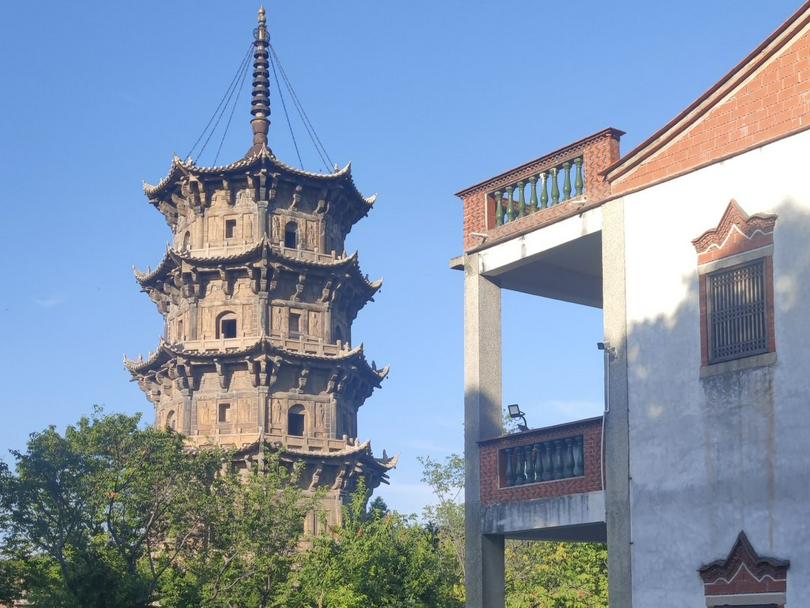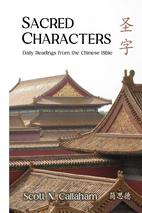Quanzhou is the starting point of the Maritime Silk Road and the southern gateway for the introduction of religions to China. Thus, in the old Quanzhou, onw will see religious sites: Buddhist temples, Taoist shrines, General Guanyu's temples, or Christian churches.
During the 10th–14th centuries, Quanzhou—then known as Citong City—flourished as one of the busiest seaports in the world. Marco Polo, the renowned traveler who helped introduce China to the West and inspired the Age of Exploration, vividly described its bustling harbor in Travels: "The quantity of pepper brought here is considerable. For every one ship loaded with pepper heading for the port of Alexandria, there must be one hundred ships coming to the port of Citong." From Arabia, Persia, and Southeast Asia, merchants crossed the seas to Quanzhou, bringing not only their goods but also their cultures and faiths, turning the city into a vibrant crossroads of global trade and belief.
On day two in Quanzhou, we got up at six as we planned to take advantage of the cool weather to stroll around Kaiyuan Temple. As netizens comment that in the early morning, the temple has fewer tourists. The temple grounds are in shades of lush trees, with its ancient buildings nestled among tall banyan groves.
The construction of Kaiyuan Temple has a legend. Before 686 A.D., the site was a mulberry yard owned by a wealthy man called Mr Huang. One day, while napping in the garden, he dreamed of a monk who came to request the land to build a temple. Though unwilling to part with it, Huang did not want to refuse outright, so he set a condition: if white lotus flowers bloomed in the mulberry garden within three days, he would donate it. Upon waking, he found that the yard had indeed blossomed with white lotuses. True to his words, he donated the land, and thus Kaiyuan Temple was founded. I have not verified the truth of the legend, but ancient mulberry trees, over 1,300 years old, still stand today.
In addition to the ancient mulberry trees, the temple is home to two stone pagodas, the East and West Pagodas. They are the oldest surviving stone pagodas in China and are 45 years older than the Tiger Hill Pagoda in Suzhou. There is also an ancient ship exhibition inside the temple. However, it was under renovation, and we could not see it.
By around nine o'clock, more tourists were arriving. I noticed that most were sightseeing rather than religious worship.
Near noon, we left the temple and went to West Street. There, the shops were not open. It was still quiet. We walked toward the lighthouse and reached the famous Christian Quannan Church. Christianity in Quanzhou did not begin with the church's founder, British Presbyterian missionary John D. Dorward. The foundation began as early as the 7th–10th centuries, when Nestorian Christianity arrived in Quanzhou with merchant caravans. However, Christianity was not widely known then. In the 13th – 14th Century, with the Mongols establishing a vast empire that connected the East and West, Christianity reentered Quanzhou and gradually flourished. By 1303, missionaries had built a large Christian church, and its name was Xingming Church. An inscribed stele from 1306 records that Quanzhou at the time already had Christian administrators and bishops, showing how Christianity flourished then.
Quannan Church was built in 1866. The church still retains its original appearance. The main entrance was closed as it was not Sunday. Entering the courtyard, we saw only a trendy heart-shaped photo spot in the yard.
Leaving Quannan Church, we continued along Zhongshan Road, a street full of the charm of the early Republic of China. We arrived at Guanyue Temple. Most of the worshippers there are sincere young people, who offer incense and draw fortune lots. With the widely accepted smart devices, even temples have digitized this tradition. Professional fortune interpreters are made redundant. After shaking a numbered stick, worshippers simply scan a QR code and enter the number to get the meaning of their fortune lots.
Next to Guanyue Temple is the ancient Qingjing Mosque, built in 1009 AD. Only a few pillars and the foundation remain today, silently telling of its long and glorious past.
In the afternoon, we visited Quanzhou's most famous Tianhou Temple, dedicated to Mazu, the sea goddess. Mazu has the most devoted followers along the southeast coast. She was a real person, originally named Lin Mo, known for her kindness and willingness to help others. Over time, people deified her, and successive emperors conferred higher titles upon her, leading to the current name "Tianhou" ("Heavenly Empress," translator's note). In front of her statue in Tianhou Temple, we saw a large quantity of burning incense with multitudes of worshippers. Mazu's followers are not only in Quanzhou but all over the world. It is said that she is the only deity with an ID card and the only one who takes flights across the seas to visit her followers. Her plane ticket, they say, is golden.
Located on the coast, southern Fujian has little arable land, and its maritime climate brings no fewer natural disasters than inland areas. Thus, locals turned to the sea, engaging in overseas trade to acquire resources and wealth. Naturally, Mazu, as the sea goddess, became the spiritual patron of the Minnan people.
Apart from these religious sites, Quanzhou also has a Manichaean temple, Cao'an Temple, which we did not visit due to time constraints.
Having seen so many religious sites, I cannot help but marvel at Quanzhou's cultural diversity and the local people's openness and tolerance. So many temples and shrines stand side by side, sometimes only separated by a wall. Yet, they coexist peacefully without rejecting each other. This may be one of the reasons for Quanzhou's achievements and international influence today. In Quanzhou, one can feel the courage, openness, and perseverance of its people. They have conquered the sea and opened it up; they have sent their own abroad and welcomed overseas guests into Quanzhou, and China.
Originally published by the Christian Times
- Edited by Karen Luo and translated by Charlie Li












